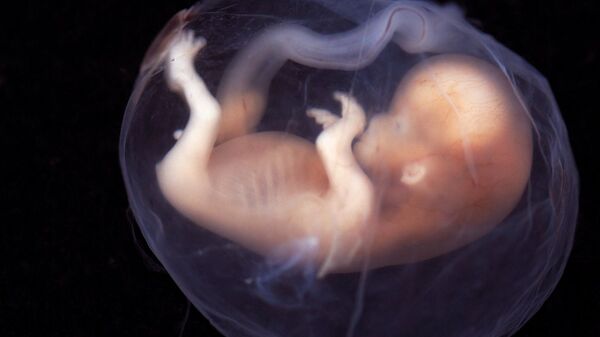Sputnik discussed this with Christophe Galichet, a senior research scientist at the UK’s Francis Crick Institute.
Sputnik: So how big of a step is this development? And how different is it from previous attempts?
Christophe Galichet: It’s quite a big step, it’s still at an early stage actually. The big step is that for the first time the embryo could pass a very important, a very crucial stage in the life of an embryo, which is gastrulation: the formation of the three layers that will form the embryo later on, and the fetus, so it is just a step where this study could put together the three stem cells. That is very important for the proper development of an embryo, which are the embryonic stem cells, the stem cell that would give rise to the embryo proper, and the two other stem cells, one giving rise to the placenta and one giving rise to the yolk sac, so very important advances in development ability.
READ MORE: MIT Expert Explains What Biological Machines Are and What Functions They Perform
Sputnik: What light could this research shed on early human development then?
Sputnik: How soon do you expect this technique will be applied to the study of human embryos; do you have any time scales?
Christophe Galichet: Given that the paper has been published, and as you can see, it’s working, I don’t have a time scale. I cannot tell you whether in a few months or in a few years it will be published, but I’m pretty sure that some group in the world will be trying to see if it’s possible to do it using human stem cells.
Sputnik: What’s your take on the ethical side of this procedure?
Christophe Galichet: Of course if it’s used with humans there will be an ethical issue because then we will be using stem cells from humans and a non-'sperm and egg' way of generating embryos. Therefore, an ethical description needs to determine the status of those embryos. Within UK law, which is highly and tightly regulated, this would be discussed to see how these embryos will be dealt with.
READ MORE: British Scientists Come Closer to Creating Artificial Human Embryo
Sputnik: And how likely is the study to face a backlash then?
Christophe Galichet: Of course there will be people against it, but if scientists do manage to create self-assembled human embryos, it would be for research purposes only, and to try to understand how human embryos develop, which might be different from the mouse embryo, and we know that it is different. It will be a very important tool to understand when things go wrong; because human embryos are very rare it will be an easy way of generating human embryos for understanding the early step in human development.
Sputnik: And what sort of next stage is there with regard to this investigation and research? What will happen now in the next few months, can you share with us?
Christophe Galichet: While the embryo is still being formed to resemble a natural embryo, this self-assembled embryo is not perfect. So the next step is to try and understand why it’s not perfect, why is this little aspect of the formation not present or is misplaced, so as to try to better understand and to refine this understanding of the self-assembled embryos. This will be very helpful, as in natural embryos, in knowing why things go wrong when they go wrong.
The views and opinions expressed in this article by the speaker do not necessarily reflect those of Sputnik.




